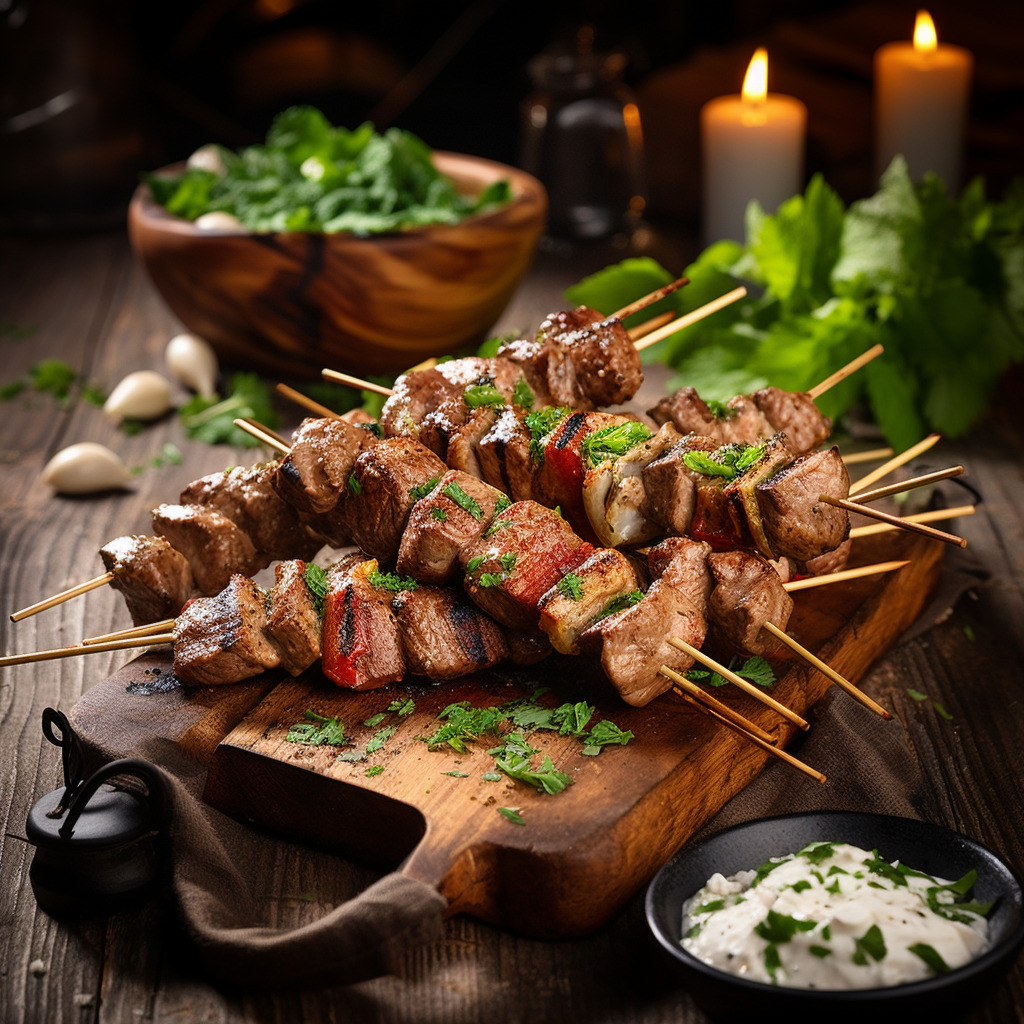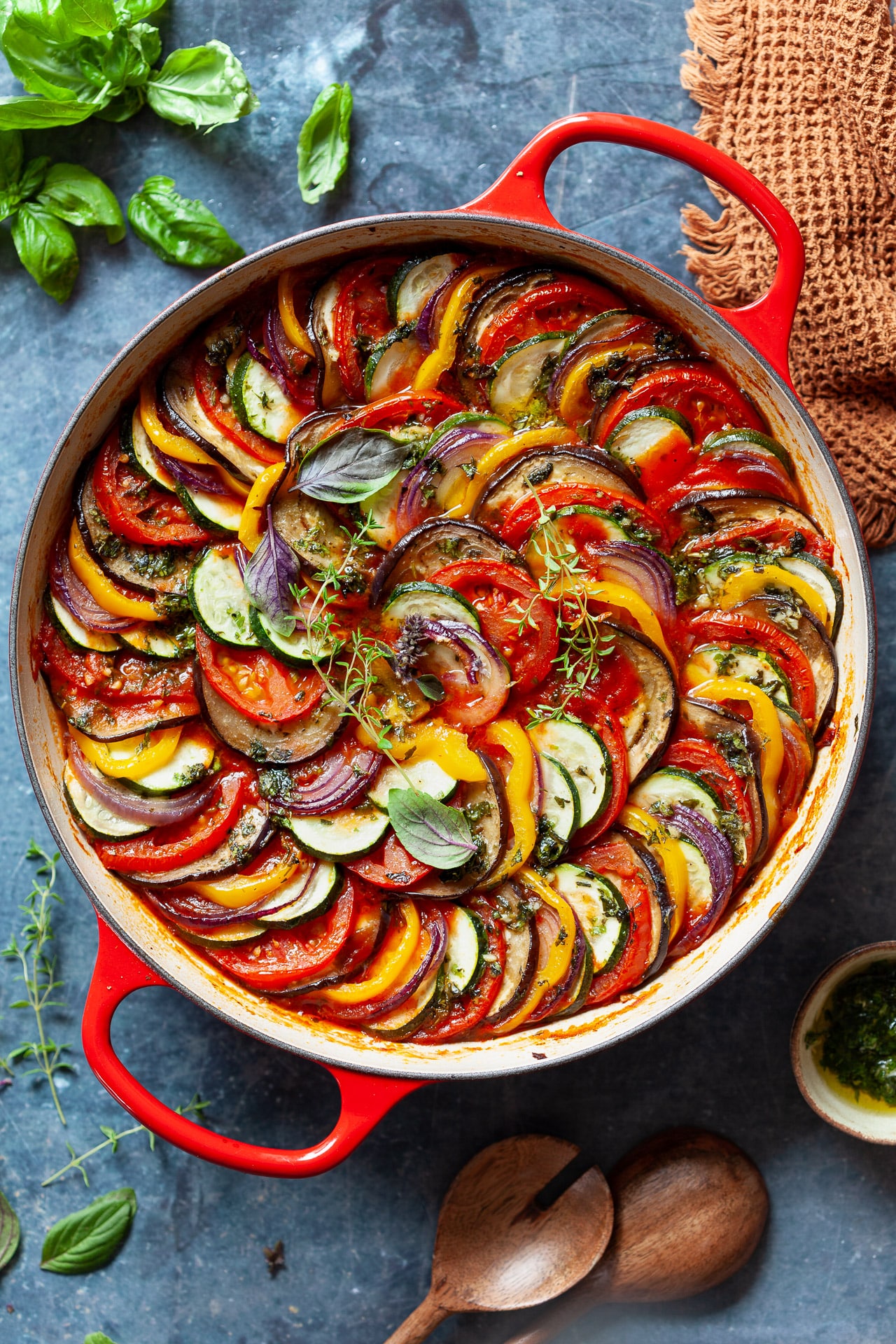A Journey Through Flavor: Exploring the World of Souvlaki
Related Articles
- A Journey Through The World Of Nasi Goreng: From Humble Beginnings To Culinary Masterpiece
- Capcay: A Culinary Journey Through Indonesia’s Stir-Fry Paradise
- A Sushi Odyssey: From Humble Beginnings To Modern Mastery
- Tom Yum Goong: A Dive Into The Spicy, Sour, And Aromatic World Of Thai Cuisine
- A Journey Through The Tangy Depths Of Asem-Asem Daging: A Culinary Adventure In Indonesia
Introduction
In this article, we dive into A Journey Through Flavor: Exploring the World of Souvlaki, giving you a full overview of what’s to come
A Journey Through Flavor: Exploring the World of Souvlaki

Souvlaki, a beloved Greek street food, is more than just grilled meat on a skewer. It’s a tapestry woven with history, tradition, and culinary ingenuity, offering a delicious journey through the vibrant flavors of Greece.
This article delves into the heart of souvlaki, exploring its origins, uncovering the secrets behind its perfect execution, and inspiring you to create your own culinary masterpieces. From the humble beginnings of a peasant’s meal to its modern-day global popularity, we’ll uncover the evolution of this iconic dish, providing you with the knowledge and confidence to master the art of souvlaki.
A Culinary Odyssey: The History of Souvlaki
The origins of souvlaki trace back to ancient Greece, where skewers were used to cook meat over open fires. This simple method, born out of necessity, evolved into a beloved culinary tradition, a testament to the ingenuity and resourcefulness of the Greek people.
From Ancient Origins to Modern-Day Delights:
- Ancient Greece: Evidence suggests that the ancient Greeks used skewers for cooking meat as early as the 8th century BC. These early skewers, often made from wood or bone, were used to cook a variety of meats, including lamb, pork, and poultry, over open fires.
- Byzantine Empire: During the Byzantine era, the use of skewers continued, with the dish gaining popularity among both the elite and the common people.
- Ottoman Era: Under Ottoman rule, souvlaki evolved, with the introduction of new ingredients and spices, adding further depth and complexity to its flavor profile.
- Modern Greece: In the 20th century, souvlaki became a staple of Greek cuisine, with street vendors and taverns alike serving up this delicious and affordable dish.

From the Streets to the World:
Today, souvlaki has transcended its humble origins, becoming a globally recognized culinary delight. Its simplicity and versatility have made it a favorite in restaurants and kitchens worldwide, showcasing the enduring appeal of this classic Greek dish.
Unveiling the Secrets: The Essence of Souvlaki
Souvlaki, at its core, is about simplicity, showcasing the natural flavors of high-quality ingredients. It’s a testament to the belief that less is often more, allowing the true essence of the food to shine through.
The Key Ingredients:
- Meat: Traditionally, pork is the star of the show in souvlaki, but other meats like lamb, chicken, and even beef are also popular choices. The secret lies in selecting high-quality, lean cuts of meat, ensuring a juicy and flavorful end product.
- Marinade: The magic of souvlaki often lies in its marinade. A blend of olive oil, lemon juice, garlic, herbs, and spices creates a symphony of flavors that permeates the meat, tenderizing it and adding a burst of aromatic complexity.
- Skewers: Traditionally, metal skewers are used for souvlaki, allowing for even cooking and easy manipulation. However, wooden skewers can also be used, adding a subtle smoky flavor to the meat.
- Pita Bread: This soft, fluffy bread is the perfect vessel for souvlaki. It absorbs the juices from the meat and the creamy tzatziki sauce, creating a harmonious blend of textures and flavors.
Mastering the Art: Techniques for Perfect Souvlaki
Crafting the perfect souvlaki is a delicate dance between preparation and execution. From selecting the right ingredients to mastering the grilling technique, each step plays a crucial role in creating a culinary masterpiece.

Preparing the Meat:
- Cutting the Meat: Thinly slice the meat against the grain, ensuring even cooking and tender bites.
- Marination: Submerge the meat in the marinade, ensuring it is fully coated. Allow the meat to marinate for at least 30 minutes, and up to overnight for maximum flavor infusion.
- Skewering the Meat: Thread the marinated meat onto skewers, ensuring the pieces are close together but not overcrowded. This allows for even cooking and prevents the meat from drying out.
Grilling to Perfection:
- Heat Control: Preheat the grill to medium-high heat. Ensure the grill grates are clean and lightly oiled to prevent sticking.
- Cooking Time: Grill the skewers for 3-5 minutes per side, depending on the thickness of the meat. Flip the skewers frequently to ensure even cooking.
- Doneness: The meat should be cooked through, with no pink remaining in the center. Use a meat thermometer to check for doneness, aiming for an internal temperature of 165°F (74°C) for chicken and 145°F (63°C) for pork.
- Resting: Once cooked, remove the skewers from the grill and allow them to rest for a few minutes before serving. This allows the juices to redistribute, resulting in a more tender and flavorful souvlaki.
Beyond the Basics: Exploring the World of Souvlaki Variations
Souvlaki, with its versatility, lends itself to endless variations, allowing you to explore a world of culinary creativity. From the classic Greek flavors to modern-day twists, the possibilities are limitless.
Traditional Variations:
- Souvlaki Kalamaki: This classic souvlaki features pork marinated in a simple blend of olive oil, lemon juice, garlic, oregano, and salt. It’s often served with tzatziki sauce and a side of onions and tomatoes.
- Souvlaki Kotopoulo: This variation features chicken marinated in a similar marinade, but with the addition of paprika and cumin, adding a warm, smoky depth to the flavor profile.
- Souvlaki Arni: This lamb souvlaki is a rich and flavorful option, often marinated with herbs like rosemary and thyme, and served with a side of roasted vegetables.
Modern-Day Innovations:
- Spicy Souvlaki: Add a kick to your souvlaki by incorporating chili flakes or hot peppers into the marinade.
- Sweet and Savory Souvlaki: Experiment with sweet and savory combinations by using honey or maple syrup in the marinade, and pairing it with grilled pineapple or onions.
- Vegetarian Souvlaki: Create a vegetarian version by using vegetables like zucchini, bell peppers, and mushrooms, marinated in a flavorful blend of herbs and spices.
The Art of Accompaniment: Elevating the Souvlaki Experience
Souvlaki, while delicious on its own, is truly elevated when paired with complementary accompaniments that enhance its flavors and textures.
Classic Accompaniments:
- Tzatziki Sauce: This creamy yogurt sauce, flavored with garlic, cucumber, and dill, is a staple accompaniment to souvlaki. It adds a refreshing tang and a creamy texture to the dish.
- Pita Bread: Soft and fluffy, pita bread is the perfect vessel for souvlaki, absorbing the juices from the meat and the sauce, creating a harmonious blend of textures and flavors.
- Greek Salad: A simple yet flavorful salad of tomatoes, cucumbers, onions, and feta cheese, tossed in a tangy vinaigrette, complements the richness of the souvlaki.
Beyond the Basics:
- Roasted Vegetables: Add a touch of sweetness and color to your souvlaki with roasted vegetables like bell peppers, zucchini, and onions.
- Hummus: This creamy chickpea dip adds a protein-rich element to the meal, and its earthy flavor complements the grilled meat.
- Fries: Crispy fries, seasoned with salt and pepper, offer a crunchy contrast to the tender souvlaki.
Culinary Tips: Elevate Your Souvlaki Game
- Marinate Overnight: For maximum flavor infusion, allow the meat to marinate overnight.
- Use High-Quality Ingredients: Opt for lean cuts of meat and fresh, flavorful herbs and spices.
- Don’t Overcrowd the Skewers: Leave some space between the meat pieces to allow for even cooking.
- Preheat the Grill: A hot grill ensures quick cooking and a beautiful sear on the meat.
- Rest the Meat: Allow the cooked meat to rest for a few minutes before serving to allow the juices to redistribute.
- Get Creative with Accompaniments: Experiment with different sauces, salads, and sides to create your own unique souvlaki experience.
A Culinary Journey: From Kitchen to Table
Souvlaki, more than just a dish, is an invitation to explore the flavors and traditions of Greece. It’s a reminder that even the simplest of ingredients, when combined with passion and culinary ingenuity, can create a truly memorable dining experience.
So, embark on your own culinary adventure, and let the aroma of grilling meat and the vibrant flavors of souvlaki transport you to the sun-drenched shores of Greece, where every bite is a celebration of culinary artistry and the joy of sharing a meal with loved ones.
Closure
Thank you for reading! Stay with us for more insights on A Journey Through Flavor: Exploring the World of Souvlaki.
Make sure to follow us for more exciting news and reviews.
Feel free to share your experience with A Journey Through Flavor: Exploring the World of Souvlaki in the comment section.
Keep visiting our website for the latest trends and reviews.





